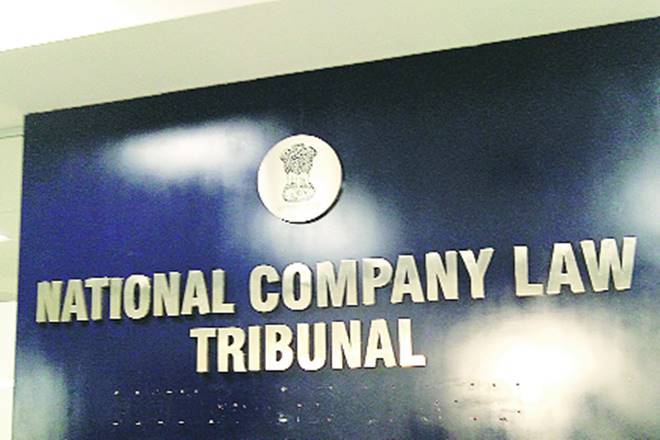This article is written by Madhu Ayachit, pursuing a Certificate Course in National Company Law Tribunal Litigation from LawSikho.
Table of Contents
Introduction
The main objective behind the enactment of the Insolvency and Bankruptcy Code, 2016 (hereinafter referred to as “IBC”/“Code”) was to resolve the insolvency of the corporate debtor by way of the corporate insolvency resolution process (hereinafter referred to as “CIRP”) and make it stand back on its feet with the help of resolution applicants. However, this can be achieved only when there is no interference from the creditors, employees, guarantors, and other stakeholders after its insolvency resolution. Moreover, it is also important to ensure that the successful resolution applicant enjoys and conducts the affairs of the corporate debtor independently and afresh.
Therefore, the Code provides that no claims for recovery of dues or liabilities can be made after the National Company Law Tribunal (hereinafter referred to as “NCLT”/“Adjudicating Authority”) has approved the resolution plan. This ensures that the resolution plan will have a binding force not only on the corporate debtor but also on its stakeholders including the government and local authorities.
Acceptance of resolution plan
As per Section 31 of the Code, the Adjudicating Authority has the power to approve the resolution plan if it is satisfied that it has been approved by a majority of sixty-six percent of the committee of creditors (hereinafter referred to as “CoC”). Such approval shall have a binding force on the corporate debtor and its creditors, employees, and members. Moreover, as per Section 31(1), an approved resolution plan shall also be binding on the Central and State Government, or any local authority to whom statutory dues are owed by the corporate debtor. Therefore, an approved resolution plan takes the form of a binding contract on the corporate debtor and its employees, members, and creditors.
Claims made before the acceptance of the resolution plan
The word “claim” has been defined under Section 3(6) of the Code. A claim means a right to payment and a right to remedy for a breach of contract, whether or not such right is reduced to judgment, fixed, disputed, undisputed, matured, unmatured, legal, equitable, secured, or unsecured. The claims form a very important part of the insolvency and bankruptcy resolution regime and come into the picture after the initiation of the CIRP.
As per Regulation 6 of the Insolvency and Bankruptcy Board of India (Insolvency and Resolution Process for Corporate Persons) Regulations, 2016 (hereinafter referred to as “CIRP Regulations”) the resolution professional (hereinafter referred to as “RP”) or the interim resolution professional (hereinafter referred to as “IRP”) is empowered to make a public announcement calling the creditors and other stakeholders of the corporate debtor to submit their claims against the corporate debtor.
As per Regulation 12 of the CIRP Regulations, the financial creditors, operational creditors, secured creditors, unsecured creditors, employees, and other stakeholders of the corporate debtor have to submit their claims along with the relevant proof to the IRP/RP within ninety (90) days from the initiation of the CIRP. The claims which are submitted only within the prescribed time and before the approval of the resolution plan are considered, examined, verified, and admitted by the RP within seven (7) days from the last date of receipt of such claims, as per Regulation 13 of the CIRP Regulations.
Claims made after the acceptance of the resolution plan
The claims which are made after the approval of the resolution plan are not considered and the right of such claimants to recover dues or any payment from the corporate debtor might get extinguished once the NCLT has given its approval for the implementation of the resolution plan. The issue of the treatment of dues and claims after the approval of the resolution plan by the NCLT was dealt with by various tribunals, courts including the Hon’ble Supreme Court of India.
In the case of Ultra Tech Nathdwara Cement Ltd. v. Union of India through the Joint Secretary, Department of Revenue, Ministry of Finance & Ors., the tax authorities had raised some statutory dues after the approval of the resolution plan. However, the Hon’ble Rajasthan High Court dismissed the claims of the tax authorities keeping in mind Section 31 of the Code. The Hon’ble Court observed that the dues which are not included in the resolution plan will stand invalidated. No further claims can be made after the resolution plan has been successfully finalized and approved for implementation. The court also observed that the evaluation and verification of the claims fall under the domain of the duties of the RP/IRP and therefore, cannot be interfered with by the courts or tribunals.
In the case of Electrosteels Ltd. v. State of Jharkhand, it was alleged by the value-added tax (hereinafter referred to as “VAT”) authorities that they were not informed about the commencement of CIRP against the corporate debtor. The Hon’ble High Court of Jharkhand observed that if the authority was not aware of the commencement of the CIRP against the corporate debtor, they can continue the proceedings against the corporate debtor.
In the case of Ghanashyam Mishra & Sons Pvt. Ltd. v. Edelweiss Asset Reconstruction Company Ltd., the Hon’ble Supreme Court addressed the issue as to whether a creditor including Central Government, State Government, or any local authority is entitled to recover any unclaimed dues after the approval of the resolution plan by the Hon’ble Adjudicating Authority. The Hon’ble Court answered in negative and observed that as per Section 31(1) of the Code, all the dues owed by the corporate debtor to the said categories of creditors shall stand extinguished and no proceedings can be initiated in respect of those dues and claims if they were not made a part of the resolution plan earlier.
Recently, in the case of Sirpur Paper Mills Ltd. v. I.K Merchants Pvt. Ltd., the issue as to whether the claim of an award-holder would be extinguished after the approval of the resolution plan and if it has not raised its claim. The Hon’ble Court answered the issue in affirmative and observed that the claim would get extinguished after the acceptance of the resolution plan by the Hon’ble NCLT and further proceedings against the corporate debtor cannot be initiated for the recovery of claims which were not considered in the resolution plan.
Moreover, the Hon’ble Court while revisiting the judgment of Ghanshyam Mishra and Sons Private Ltd. v. Edelweiss Asset Reconstruction Company Ltd., observed that Section 31 cannot be used to extinguish any other claim which was raised before the initiation of the insolvency resolution proceedings. Therefore, it is clear that once the resolution plan has been approved by the NCLT in accordance with Section 31 of the Code, all the claims which were not included in the resolution plan shall stand frozen and extinguished.
Theory of fresh slate
The above-mentioned position, settled by the Hon’ble Supreme Court, has its roots in the Theory of Fresh Slate. In regard to the insolvency resolution proceedings, the theory of fresh slate refers to the position of the corporate debtor after the approval of the resolution plan.
According to the theory, on the approval of the resolution plan, the resolution applicant runs the business and affairs of the corporate debtor on a fresh slate, i.e., without the interference and hindrance from its previous creditors and stakeholders. The theory of fresh slate has its origin in Section 31(1) of the Code, according to which the corporate debtor suddenly cannot be faced with undecided dues and claims once the resolution plan has been approved by the Hon’ble NCLT.
This theory was considered by the Hon’ble Supreme Court in the infamous case of Committee of Creditors of Essar Steel India Limited v. Satish Kumar Gupta & Ors. The Hon’ble Apex Court while explaining the significance of Section 31(1) observed that resolution plan has a binding effect on the creditors, guarantors, and other stakeholders of the corporate debtor for the simple reason that after the approval of the resolution plan, the resolution applicant carries on the affairs of the corporate debtor as if it were on a fresh slate.
Conclusion
The binding nature of the resolution vests the RP/IRP with an important role as it is the duty of the RP to collect, collate, verify and admit the claims of the stakeholders and creditors of the corporate debtor. While in most cases, the RP ensures that all the valid claims are considered for the resolution plan, there might be some cases wherein the RP fails to duly verify and admit the claims. Considering such cases, the Hon’ble Supreme Court in the case of Committee of Creditors of Essar Steel India Limited v. Satish Kumar Gupta & Ors. has held that the role of the RP/IRP is administrative and not adjudicatory in nature. However, the said position still needs consideration before the Hon’ble Courts and Tribunals. Till then, it is wise on the part of the creditors and stakeholders to submit their claims in time after the commencement of CIRP of their corporate debtors.
References
- https://singhania.in/blog/claims-not-part-of-approved-resolution-plan-does-not-survive
- https://taxguru.in/corporate-law/ncltclaim-extinguished-resolution-plan-accepted-nclt.html
- https://www.barandbench.com/columns/ibc-the-theory-of-fresh-slate-and-few-debatable-issues-with-respect-to-claims
- https://www.scconline.com/blog/post/2021/06/23/treatment-of-statutory-dues/
- https://vinodkothari.com/2020/04/washout-of-prior-period-claims-in-resolution-plans/
Students of Lawsikho courses regularly produce writing assignments and work on practical exercises as a part of their coursework and develop themselves in real-life practical skills.
LawSikho has created a telegram group for exchanging legal knowledge, referrals, and various opportunities. You can click on this link and join:
 Serato DJ Crack 2025Serato DJ PRO Crack
Serato DJ Crack 2025Serato DJ PRO Crack










 Allow notifications
Allow notifications



